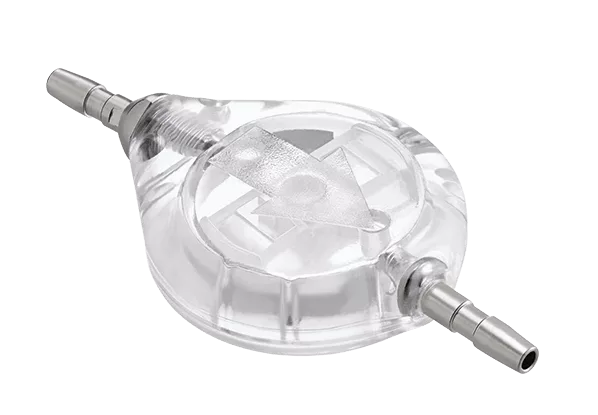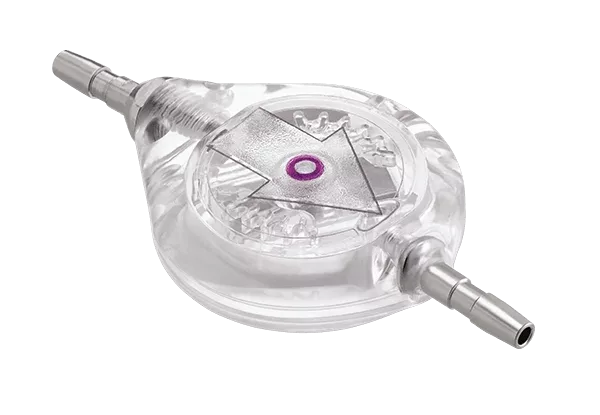To control communicating hydrocephalus, surgery is the only truly effective long-term treatment. One of the most effective therapies available is CSF shunting. These have been performed for decades and still represent the most important advance made to date in the treatment of hydrocephalus. A CSF shunt involves establishing an alternative pathway for the movement of CSF in order to bypass an obstruction of the natural pathways.
A CSF shunt is an alternative pathway for CSF to bypass an obstruction or bad absorption of the CSF in natural pathways. Insertion of a CSF shunt is a surgical procedure performed in the operating room under general anaesthetic. Neurosurgeons will choose the most appropriate operating method and valve for each patient, depending on their experience and clinical needs.
The shunt is positioned to enable the CSF to be drained from the brain into either the abdomen or the heart, through a tube called catheter. The shunt is a regulatory device, a valve which may be more or less sophisticated, which enables drainage of the excess CSF within the brain to be evacuated, without reflux (CSF flows only in one direction). This reduces the pressure within the cranium.

The valve will not open if ICP is not sufficient to activate the mechanism. This avoids excessive CSF drainage. The valve is placed between the proximal and distal catheters. Many types and configurations are available and are designed to work at different pressures, depending on the patient’s clinical needs.
The entire shunt system is positioned under the skin. No part can be seen from outside the body. You will barely feel the catheters under your skin. The valve, which is approximately 5 mm thick, can be easily found on your head.
Two types of valves are available:
It is the neurosurgeon who chooses the type and pressure of valve that is inserted before implantation, depending on the patient’s clinical characteristics and further investigations.
Standard valves for hydrocephalus work at constant pressure or resistance and are usually offered in 3 levels: either a low-pressure model, a medium pressure model, or a high-pressure model. In some cases, it is necessary to replace the implanted valve with another operating at a different of pressure. To avoid repeated surgery, a solution is to implant an adjustable pressure valve, having different pressure settings in one device.


An adjustable pressure valve offers several operating pressures in one system with the possibility to modify the operating pressure by simple external adjustment. The physician will be able to adapt the operating pressure and to adjust the CSF drainage flow according to the patient’s clinical requirements with a specific adjustment kit. This minimizes the need for surgical re-intervention.
The pressure adjustment is non-invasive and is done percutaneously. Adjustable pressure valves mechanisms contain magnets that allow them to be activated with their dedicated adjustment kit. The neurosurgeon places the magnet of the adjustment kit on the patient’s skin over the valve and can change the operating pressure. A patient will be able to keep the same shunt for longer, limiting the number of repeat surgery required.
Some valves can be sensitive to magnetic fields (including MRI, smartphones, and even children’s toys), sometimes impacting internal adjustment of the valve. To prevent these unintentional and undesired operating pressure changes, some valves have a safety locking system incorporated into the mechanism.
Brain surgery will always involve some level of risk. However, shunts have been performed for more than 50 years all over the world.
Shunt surgery typically lasts about an hour. Insertion of a CSF shunt is a surgical procedure performed in the Operating Room under general anaesthetic. Neurosurgeons will choose the most appropriate operating method and valve for each patient, depending on their experience and the individual clinical needs of the patient.
During surgery, a hole is made into the cranium so the catheter can be inserted into the brain for the CSF to flow. The valve is connected to the catheter and placed underneath the skin, either on the cranium behind the ear, in the pectoral region, or in the flank. Another catheter is connected to the valve and passed under the skin from the head to the abdomen or heart. This is where the flow will exit, to be washed out in the bloodstream.
In most cases, the patient who will benefit from a shunt will be able to go back home as soon as a week after surgery.


Any questions about Sophysa, our products or career opportunities? Send us an e-mail, call us, or find a contact person at any of our locations worldwide.